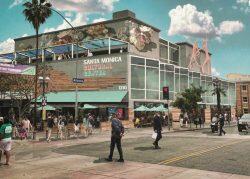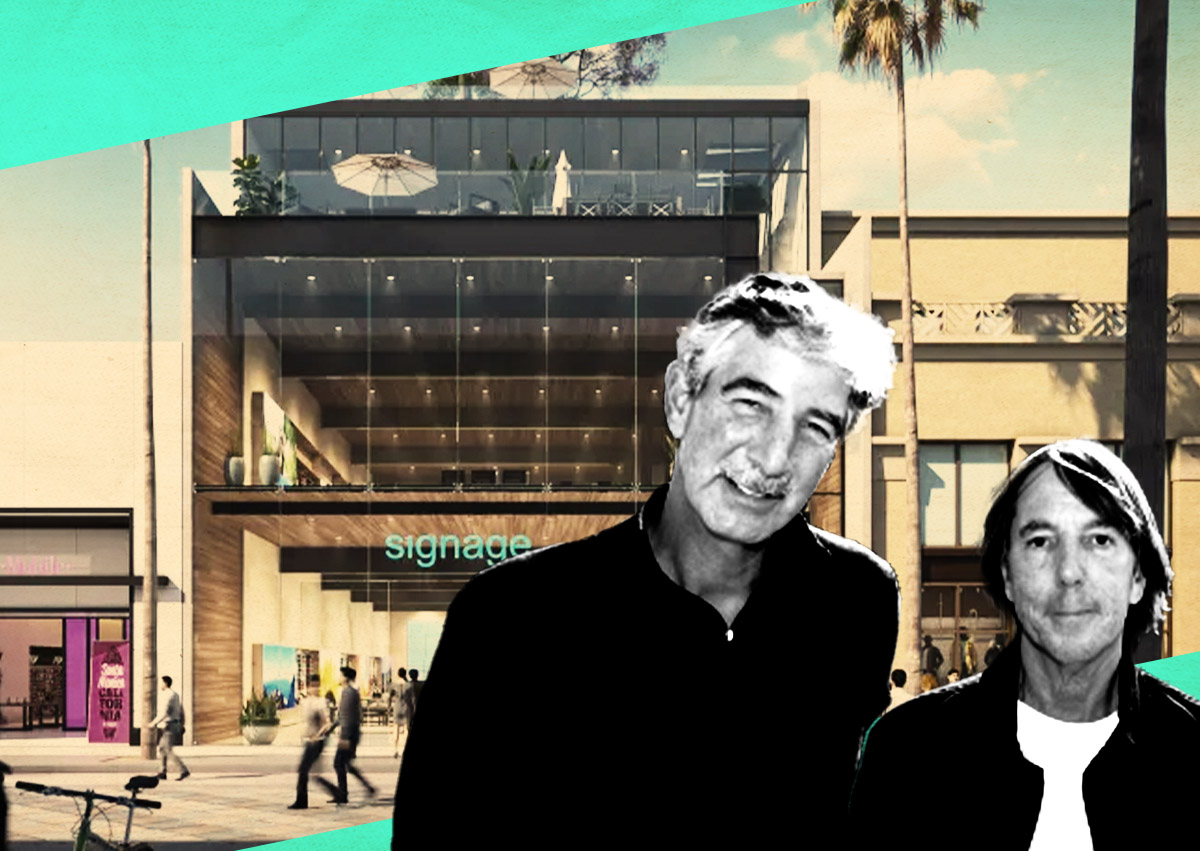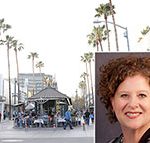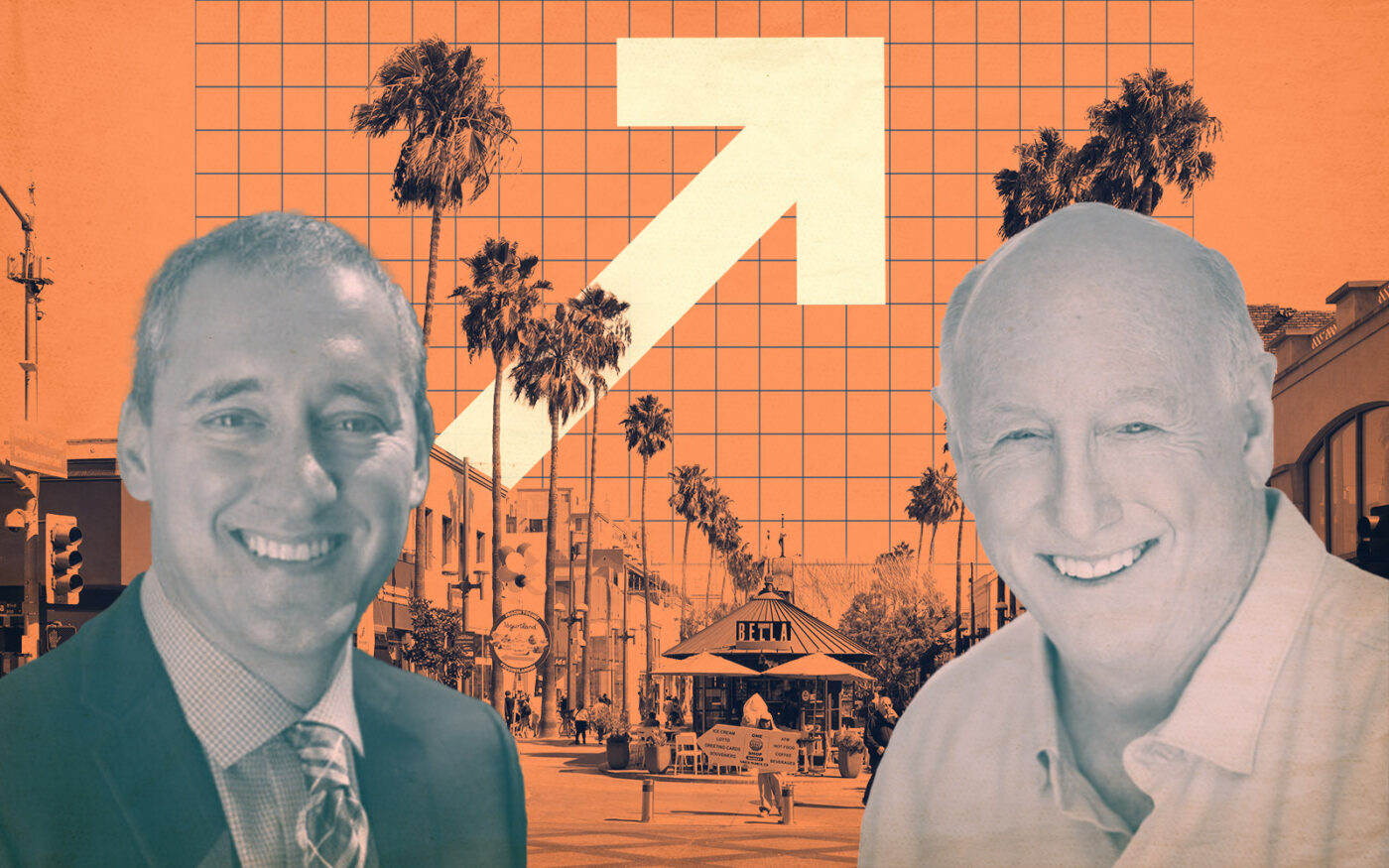Santa Monica’s Third Street Promenade once hosted with multitudes of shoppers, people watchers and patrons of street performers a couple of blocks from the beach.
Though an estimated 10 million people a year head down to Santa Monica Pier each year, a small fraction now appear interested in strolling down the sunny, pedestrian mall on Third Street, between Broadway and Wilshire Boulevard, SFGate reported.
The Adirondack chairs along the sidewalks sit empty. The street performers have mostly vanished. Back-to-back-to-back retail vacancies appear along each empty block along the 0.4-mile strip.
For decades, the Third Street Promenade, which replaced the open-air Santa Monica Mall in 1989, was viewed as a masterful reimagining of public space.
It was a rare pedestrian-only zone in a region with underperforming public transit and too many cars.
The promenade once helped brand Santa Monica as an international destination, and served as a critical economic lifeline for the city.
As one of the nation’s early outdoor malls, with nods to many famous and historic European esplanades, the Third Street Promenade was designed as a natural landing for tourists.
In years past, the promenade also featured mom-and-pop businesses mixed in with national retailers, bringing in locals who could run errands without a car.
By the mid 2000s, the street was “jumping,” according to Sally Koslov, who first began operating her mobile tarot card and palm reading cart along the promenade. “There were never any places for rent,” she told SFGate. “There were so many people, I couldn’t even push this cart to get through the sidewalk.”
Not anymore.
In time, the national chains pushed out many of the mom-and-pop stores, said Andrew Thomas, CEO of the nonprofit Downtown Santa Monica.
The overall vacancy rate for the Third Street Promenade is 25 percent, with 73 of 97 ground-floor storefronts occupied, according to Downtown Santa Monica. The emptiness is most pronounced in the promenade’s 1200 block, where more than 38 percent of spaces sit vacant.
The displacement of small businesses suggested a problem that continues to vex the Third Street Promenade: soaring rental rates for retail stores.
“In a way, we’re a victim of our own success, because those national retailers were able to pay quite a bit more than the mom-and-pops, which drove up the rents and drove out the mom-and-pops,” Thomas told SFGate.
“And [that] left some of our local community feeling that the promenade … just wasn’t for them.”
Tourists came, and the locals stopped coming.
Phil Brock, a native of Santa Monica and the city’s current mayor, said in 2018-2019, the city found that only 12 percent of Santa Monicans went to the promenade in an average year.
“If you and I opened a restaurant together, we would need locals to come in every day,” Brock told SFGate. “The tourists, the visitors, would be the gravy. But you can’t keep a restaurant booming if you don’t have the neighbors, and that’s what we lost.”
The current decline of the Third Street Promenade began about a decade ago, coinciding with the retail apocalypse that swallowed up chain stores starting in the mid-2010s.
The sales of national retailers on the promenade began sagging around 2018, Brock said, Restoration Hardware and more recently, REI, pulled up stakes in and around the outdoor mall.
Landlords then asked for even more money. When the lease for the large Barnes & Noble store came up for renegotiation, the owners of the building sought to double the rent.
“Barnes & Noble was like, ‘We can’t sell that many books, and in that case we’re going to leave,’” Brock said.
After the bookstore chain vacated its multi-story anchor on the promenade, the landlord couldn’t find a tenant right away — with the darkened building a crater on a once bustling block.
Eventually, the landlord reached a new lease agreement with WeWork … until the coworking startup imploded and it pulled out, too. The chain is slated to move back to a different location.
Then came the pandemic, and the nonessential business shutdowns. Foot traffic plunged. Homeless residents moved in, with homelessness rising 15 percent last year.
Filling the Third Street Promenade’s empty commercial vacancies remains a work in progress, with the city rezoning it for housing and hotel development.
While some rental rates along the street have fallen slightly since the pandemic, a handful of landlords along the promenade “have refused to accept the new reality and have not lowered their rent enough to attract new tenants,” Brock told SFGate. “That impacts not only them, but it impacts the entire promenade.”
— Dana Bartholomew
Read more



